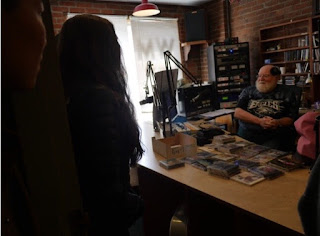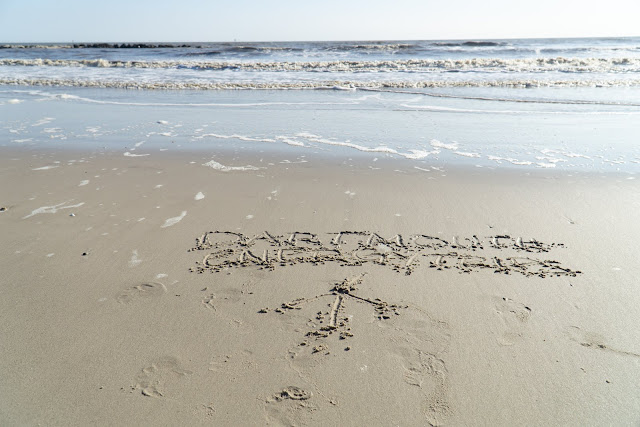Exploring Eastern Kentucky - Cultural Preservation and Public Interest Law
March 22, 2018
By: Jake Maguire
By: Jake Maguire
Today
definitely began on a gloomy note because we had to say farewell to Mike and
Wanda King and their amazing community of Montgomery, West Virginia. Wanda woke
up before we did for her shift at Montgomery General Hospital, so we wished her
well last night, but we said goodbye to Mike and Natalie, the King’s awesome
dog, this morning. We left Montgomery at about 8:30 a.m. and made the
three-and-a-half-hour drive to Whitesburg, Kentucky. Our drive to Whitesburg
was super interesting. We traversed many steep hills, navigated through deep
valleys along winding roads, and eventually passed through Logan County, West
Virginia, an area of the state that has been hit particularly hard by the
decline of coal mining and the opioid epidemic. Once we crossed the border to
eastern Kentucky, we drove through Pike and Letcher Counties. Despite the
challenges associated with living in this long-impoverished region, we noticed
a significant amount of pride among the people of eastern Kentucky for their
schools, children, and communities. For example, when we drove by Belfry Middle
School in Pike County, KY, we noticed some amazing posters and decorations
commemorating the school’s teams, the Pirates, on the exterior surface of the
school.
We arrived
at Appalshop, a center of Appalachian culture and historical preservation in
Whitesburg, Kentucky, at about 12:30 in the afternoon. Elizabeth Barret, an
archivist and filmmaker at Appalshop, gave us a tour of the facility. We met
with “Old Red,” the host of Appalshop’s radio station, WMMT-FM 88.7. We also
explored the archives at Appalshop and saw a variety of photographs taken by
William R. “Pictureman” Mullins during the mid-20th century in
eastern Kentucky. In addition, we watched an hour-long documentary that
Elizabeth Barret directed, “The Stranger With A Camera.” It is a
well-researched, emotionally moving film that describes how the community of Jeremiah,
Kentucky reacted to the 1967 murder of British filmmaker Hugh O’Connor by a
local resident. O’Connor had traveled to Letcher County, KY to document the War
on Poverty, which President Lyndon B. Johnson famously declared on the front
porch of a house in nearby Martin County, Kentucky on April 24, 1964. Appalshop
also arose out of an initiative from the Office of Economic Opportunity, an
institution established by President Johnson’s War on Poverty legislation. We
all enjoyed meeting with Elizabeth Barret and being able to ask her any and all
questions that we had!
 |
| Shelbi and Mary-Versa look at historical photos at Appalshop. |
After
leaving Appalshop, we ate lunch at Heritage Kitchen in downtown Whitesburg and
visited the Appalachian Citizens’ Law Center (ACLC). The food at Heritage
Kitchen was phenomenal, the servers were extremely helpful, and the artwork on
the walls of the restaurant portrayed the struggles of life in Appalachia
extremely well. Once we finished lunch, we walked down the street to the ACLC,
a nonprofit law firm in Whitesburg that represents coal miners and their
families on issues such as black lung and mine safety and litigates on behalf
of the public interest in cases pertaining to abandoned mining lands (AML’s)
and environmental protection from damage caused by extractive industries.
Stephen A. Sanders, ACLC’s Director, Mary Varson Cromer, an attorney at ACLC,
and Eric Dixon, the Coordinator of Policy and Community Engagement at ACLC, all
gave up nearly two hours of their time to meet with us. They gave us a wealth
of information about AML’s, public interest law, hardships faced by coal miners
and their families, and environmental protection litigation. Eric Dixon also
described some of his efforts to lobby Congress and Kentucky’s delegation,
including U.S. Senator Mitch McConnell and U.S. Representative Hal Rogers, for
the RECLAIM Act, a bipartisan bill that would allot $1 billion from the
Abandoned Mine Reclamation Fund towards revitalizing coal mining communities in
Appalachia.
We left
Whitesburg at about 6 p.m. in order to make the hour-and-a-half drive to the
bed & breakfast where we were staying that night, the Hatfield McCoy House
in Williamson, WV, the seat of Mingo County. One of the groups accidently made
a (quick) detour to Virginia along the way. After arriving at the Hatfield
McCoy House, where we had booked four rooms on the second and third floors,
some of our group went out to dinner at Sazon Mexican Restaurant in Williamson.
The food was great, and we settled down for bed shortly thereafter.




Comments
Post a Comment